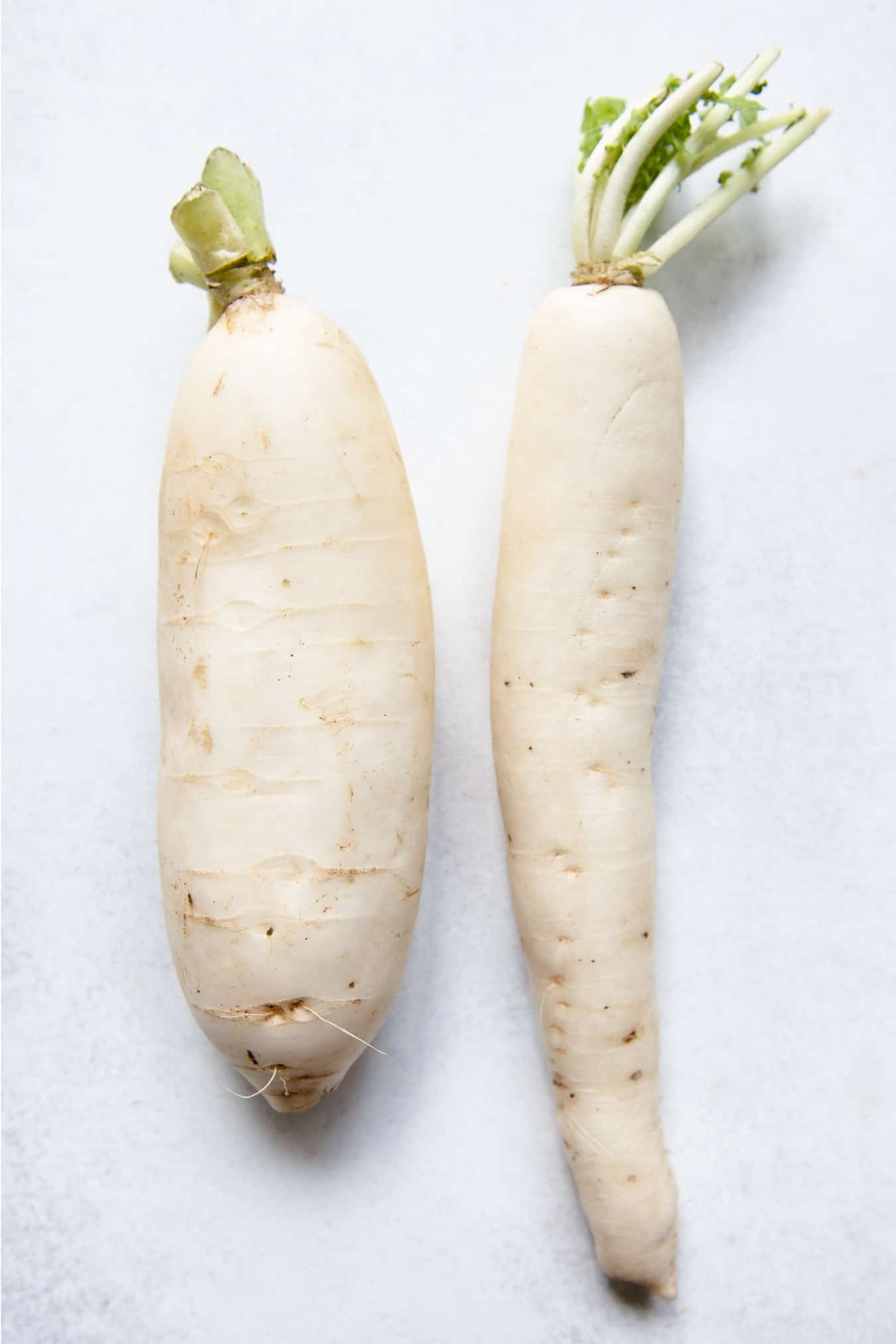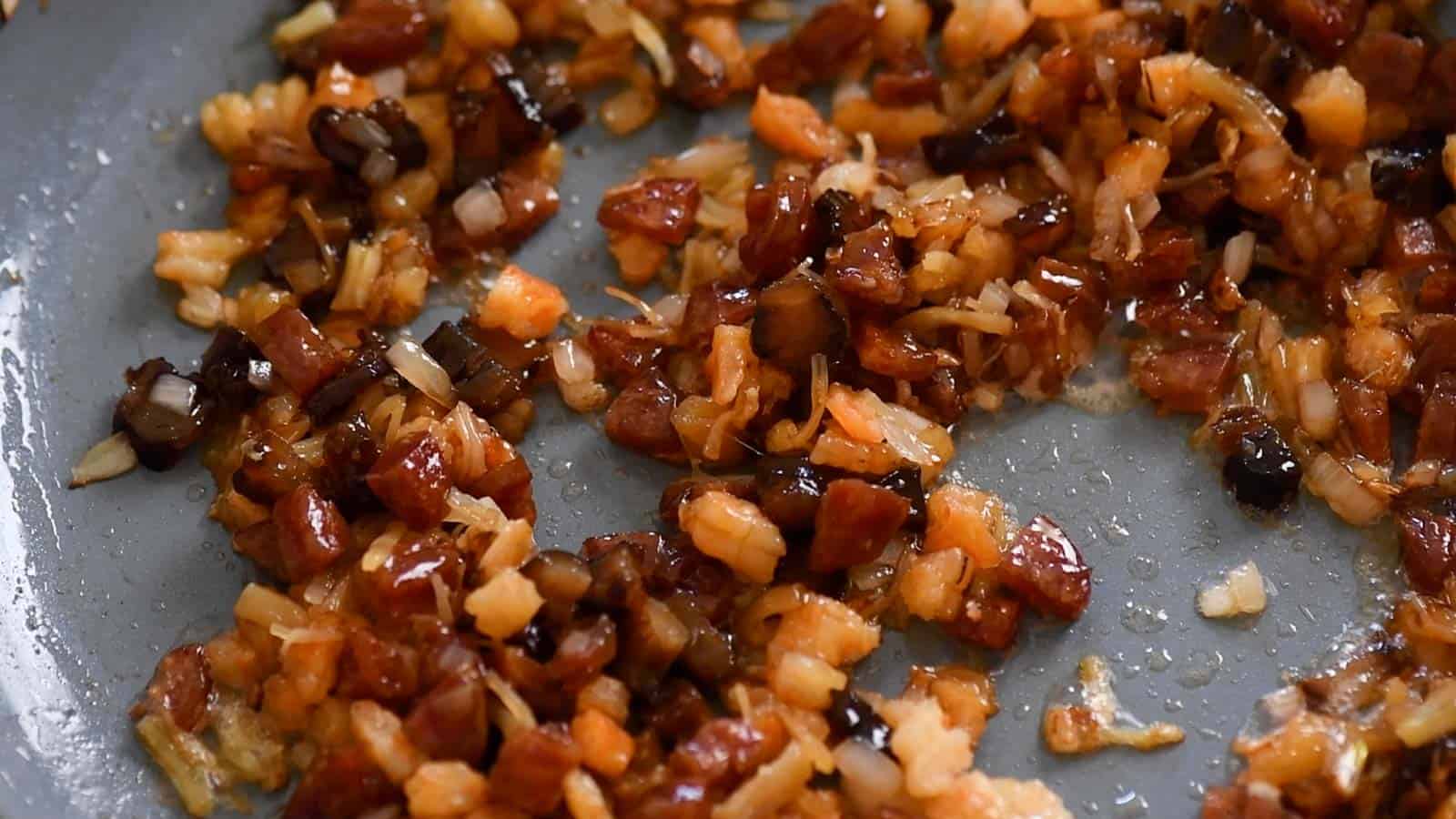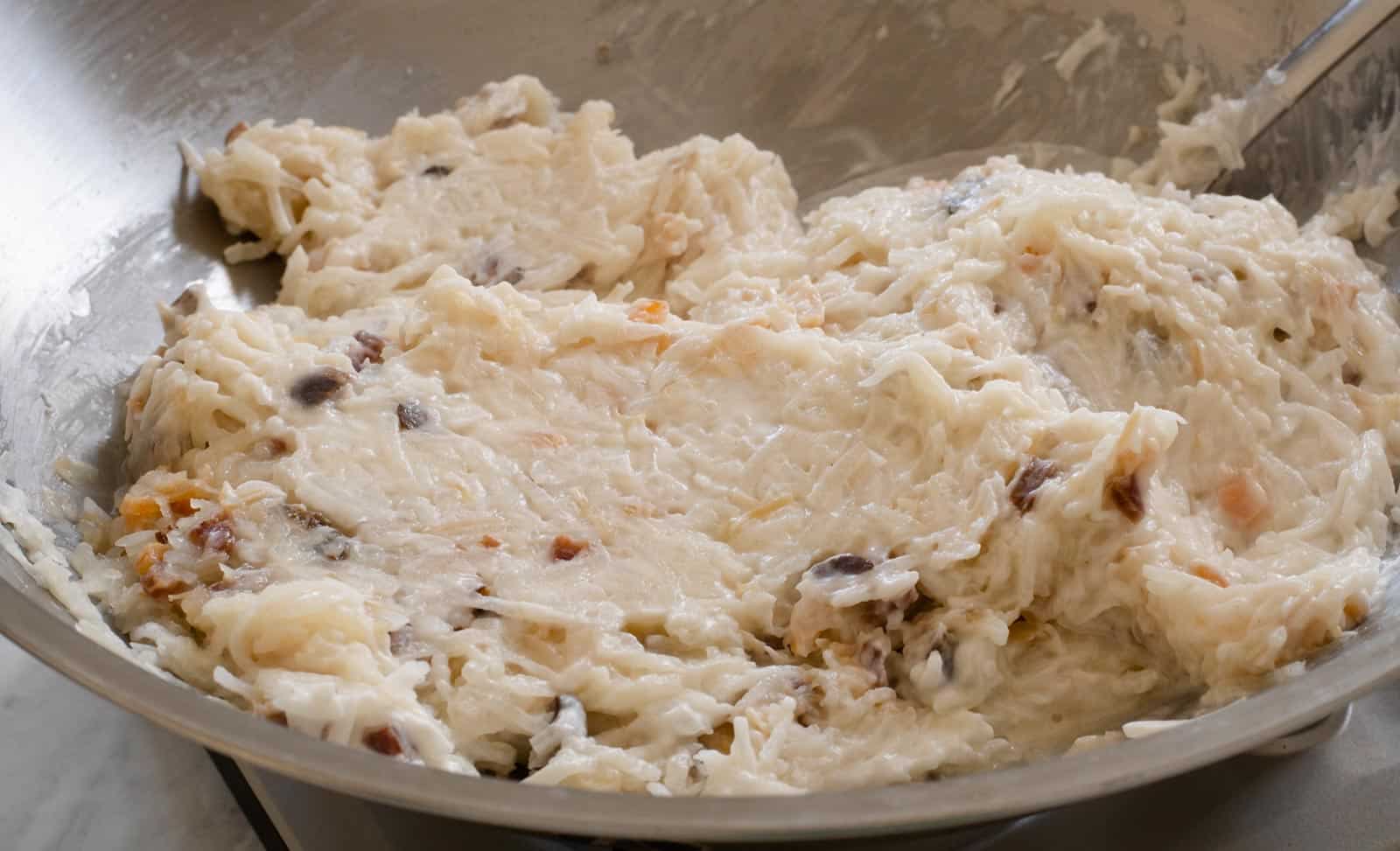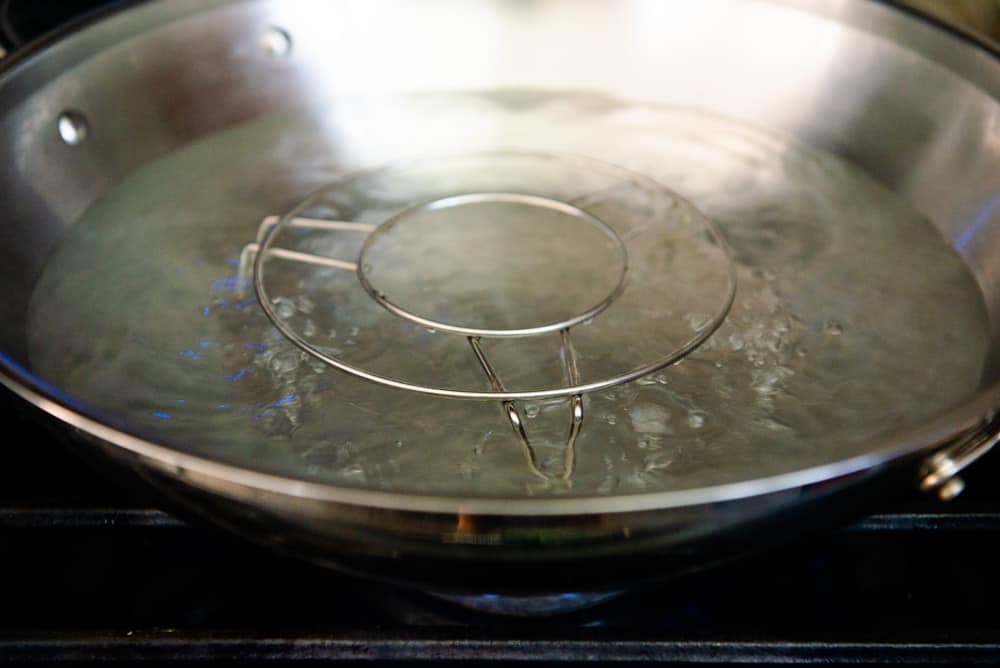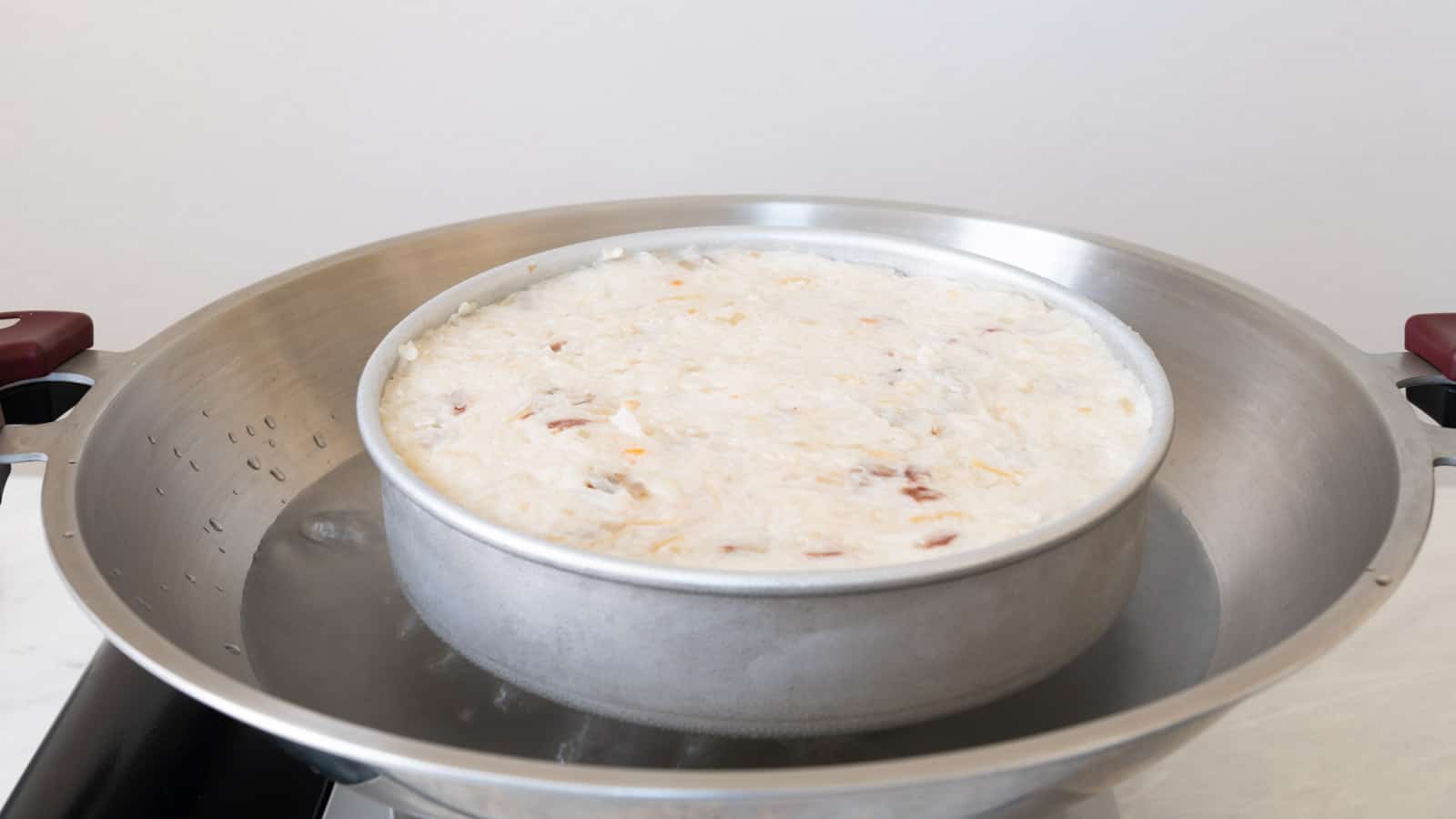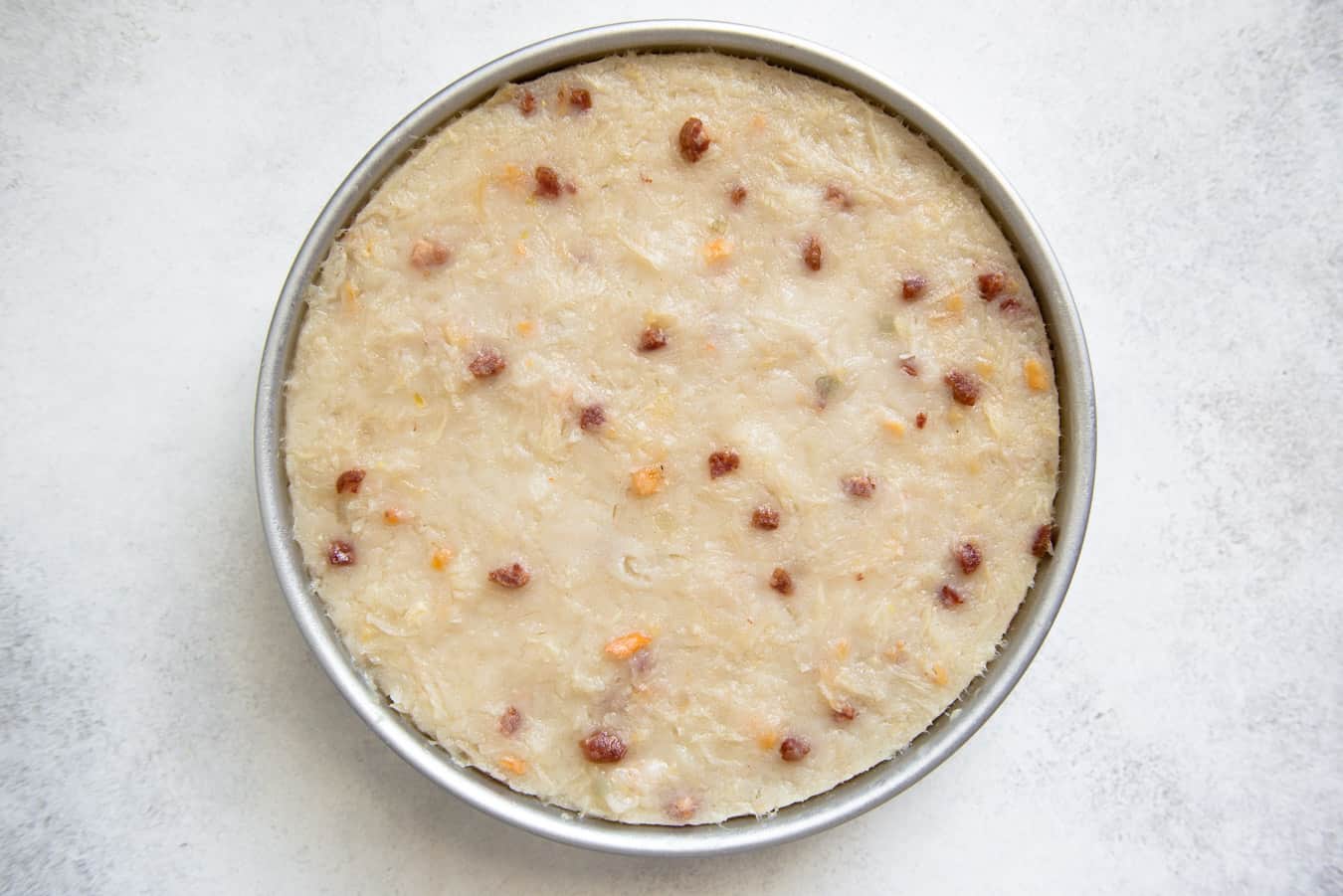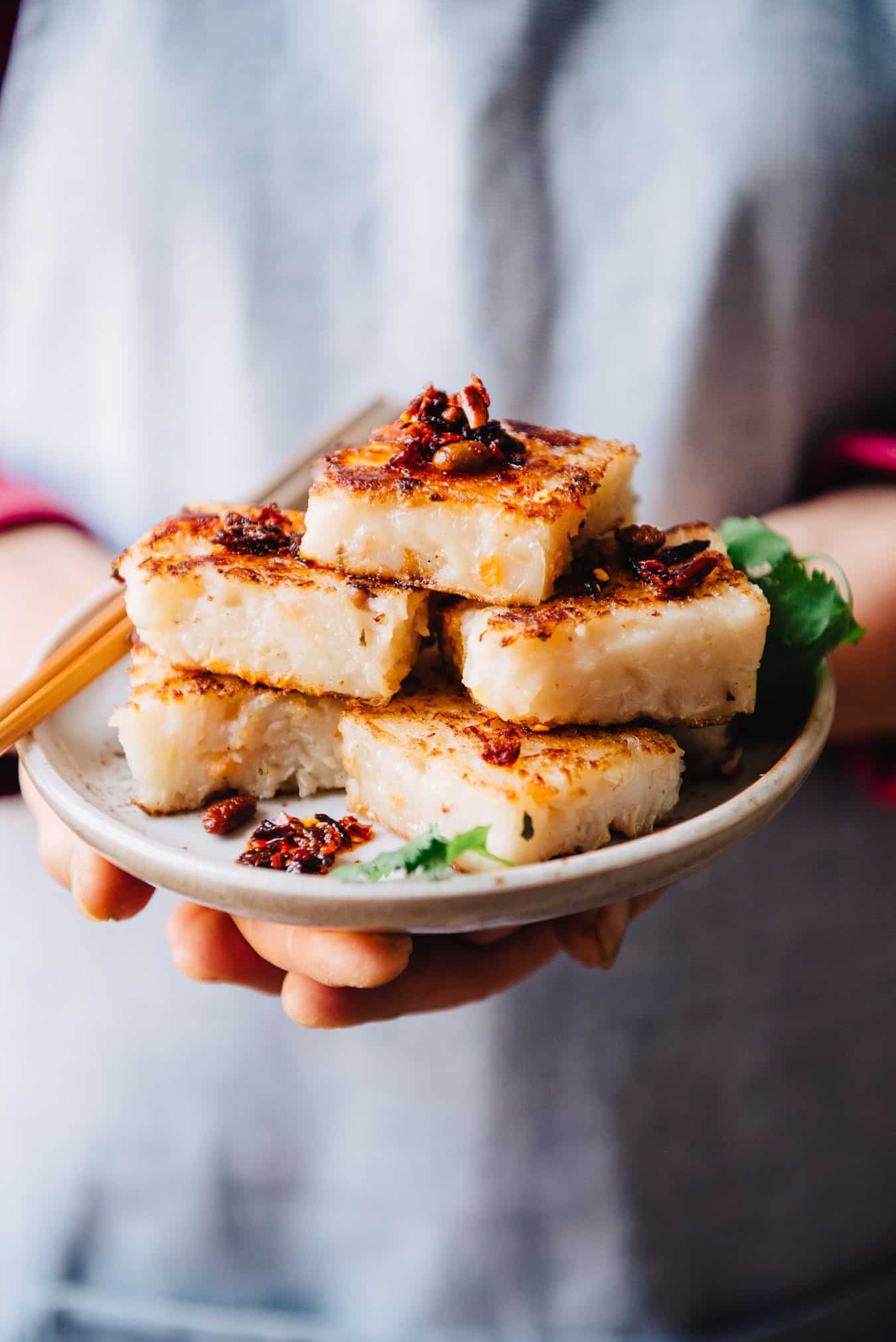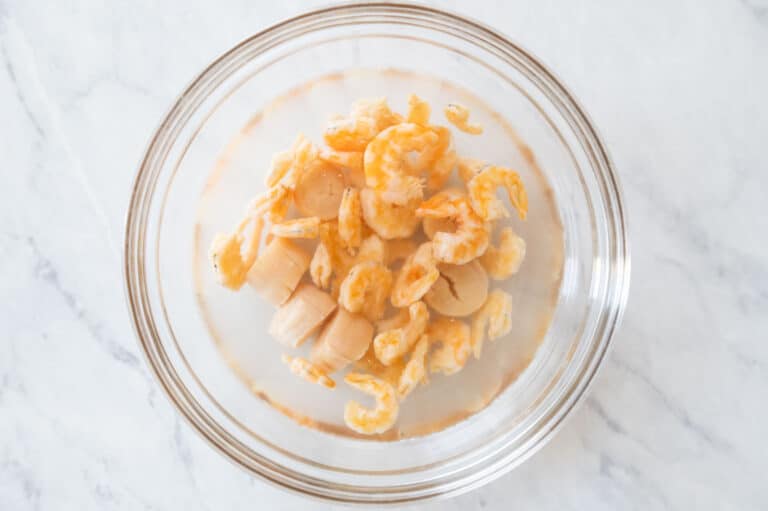Pan frying the turnip cake gives it a crispy exterior, while the inside stays soft. When you bite into a piece, you’ll taste umami flavors from ingredients like dried scallops, dried shrimp, Chinese sausage or Chinese cured pork. Mama Lin has made lo bak go for years, and I’m glad I can make it myself now. I may be biased, but I think Mama Lin’s turnip cake is the best!
WHY IS LO BAK GO CALLED “TURNIP CAKE” IN ENGLISH?
The reason why lo bak go turned into “turnip cake” in English is convoluted and confusing. Turnip cake is made of daikon (lo bak in Cantonese), a long white radish that’s commonly used in Asian cooking. Technically, this dish ought to be “radish cake.” However, lo bak go was translated as “turnip cake” by Chinese restaurants years ago, and that’s the name that has stuck. We will have to roll with it. Another issue is how “糕” (go) is translated into English as “cake.” In Chinese, the word 糕 can refer to many different foods: sweet or savory batter that’s steamed into a solid cake, like lo bak go; sweet batter that is steamed into moist and airy cakes; or sweet batter that’s baked into Western-style cakes. I’ve always found “cake” to be an imprecise translation, but that’s the word you commonly see nowadays.
A NOTE ABOUT DAIKON
White radishes, like the ones you see above, are commonly used in Asian cuisine. This radish comes in many varieties. I commonly see them labeled as daikon in grocery stores and farmers markets. Daikon (大根) is the Japanese name for this radish and means “big root.” Mama Lin prefers to cook with the radish on the left, which is thicker and more rounded. My mom calls it “Chinese radish.” According to my mother, the one on the right, which she calls “Japanese radish,” is more bitter. I can’t say that I notice that big of a difference between the two. Any daikon should work for this recipe.
HOW TO MAKE TURNIP CAKE/LO BAK GO
PREPARE FLAVORING BITS
Mama Lin likes using dried shrimp and dried scallops for her lo bak go. Soak them overnight to rehydrate. The scallops in particular need a few hours of soaking before they’re soft enough to be shredded. Mama Lin generally adds Chinese sausage (臘腸) and her homemade Chinese cured pork (臘肉) to flavor the lo bak go as well. To bring out the flavor of these ingredients, my mom sautés them along with some shallots for a few minutes. She then seasons the flavoring bits with a bit of salt and oyster sauce.
PREPARE THE DAIKON
The first thing you want to do with the daikon is to trim the tops and peel the outer skin. As you peel the daikon, use a peeler or knife to strip away any dry and fibrous layers. This is particularly an issue if the daikon you purchased is not fresh. Then, grate the daikon. If you are using a box grater, use the largest grate. Be sure to grate the daikon over a large bowl or a 9×13 pan, as you want to preserve all the daikon juices that run out. If you want to save time with food prep, you can grate the daikon using a food processor.
BOIL THE GRATED DAIKON
Before mixing the daikon into the batter, Mama Lin usually boils the daikon. She’ll fire up the wok and sauté a few smashed cloves of garlic to get the flavors going. Then, she combines the daikon, with 1 1/2 cups of water and cook the radish for 5 to 7 minutes.
MAKE THE BATTER
For the batter, Mama Lin uses a mixture of equal parts rice flour and cornstarch. The rice flour gives the cake structure while the cornstarch makes the cake softer. If you don’t have cornstarch, you can substitute it with another starch, such as potato starch or tapioca starch.
MIX DAIKON, FLAVORING BITS & BATTER
After you cook the daikon for a few minutes, mix in the flavoring bits. Make sure you reduce the heat to low. Then, carefully pour the batter into the wok. Stir everything together until the batter is no longer runny (see photo above). This shouldn’t take more than 1 or 2 minutes. If the batter is still very runny at this stage, the turnip cake won’t cook properly. Pour all the contents of the turnip cake into a greased pan. Although I use a 9×2” circular cake pan, you can use any pan, like an 8×8 square pan. Whichever pan you use, you want to make sure it can fit into a wok or steamer.
STEAMING THE CAKE
To set up the wok for steaming, place a steaming rack just over 2 inches high in the center of the wok. Fill the wok with enough water to reach just below the top of the steaming rack. Bring the water to boil. Carefully place the turnip cake above the rack. Cover and steam the cake for about 40 minutes. I prefer using a large wok, like this 14-inch stainless steel one, for steaming.
SERVING THE TURNIP CAKE
You want to let the cake cool completely before serving. Mama Lin likes eating the cake at room temperature because she likes the soft texture of the cake. I prefer it pan fried. Usually, I chill the turnip cake in the fridge overnight. That way, the cake becomes stiffer, which makes it easier for slicing and pan frying. Turnip cake is excellent with chili oil crisp, such as Lao Gan Ma or Fly By Jing, or XO sauce.
LOOKING FOR MORE DIM SUM?
Cantonese Shumai (Siu Mai)Mushroom Cheung FunPork and Cabbage PotstickersChicken PotstickersCurried Potato Fried Dumplings

